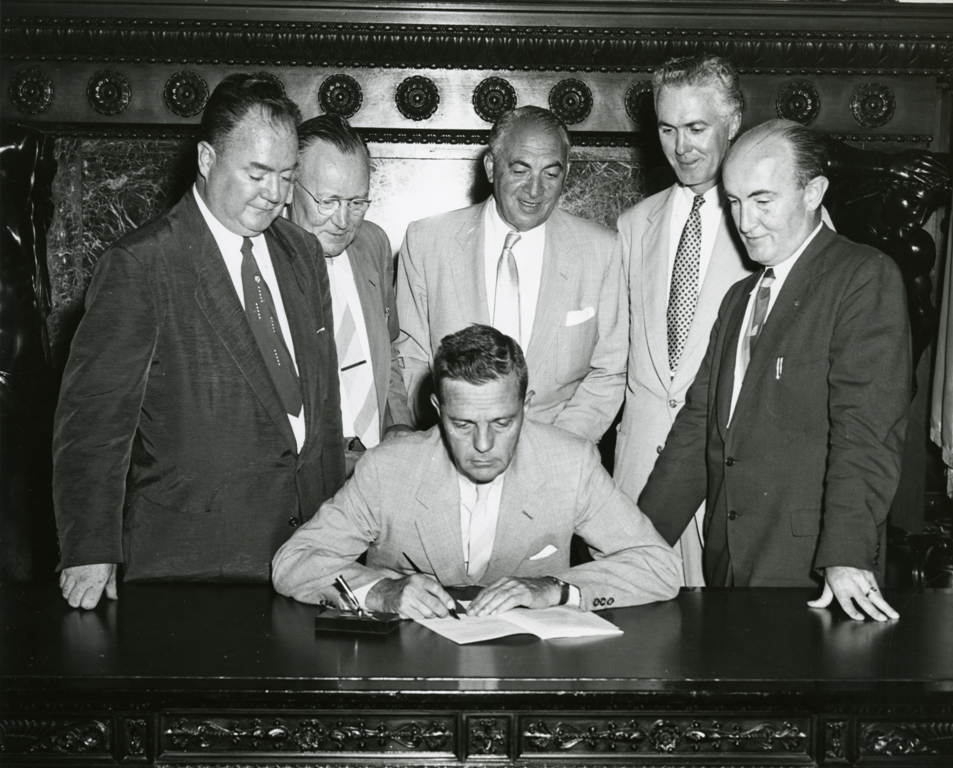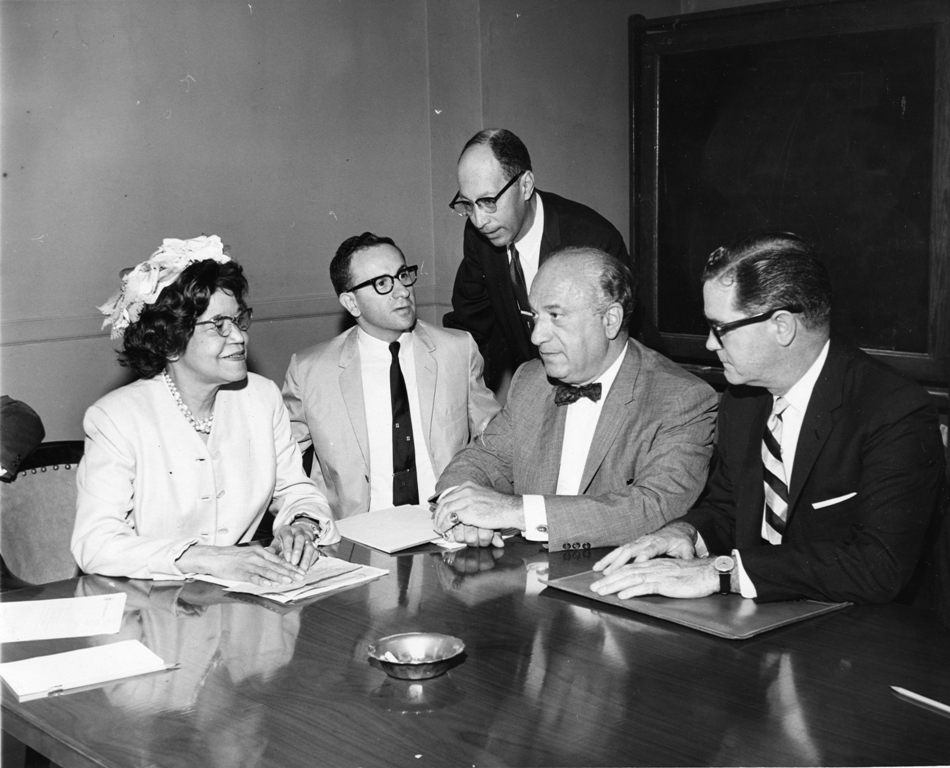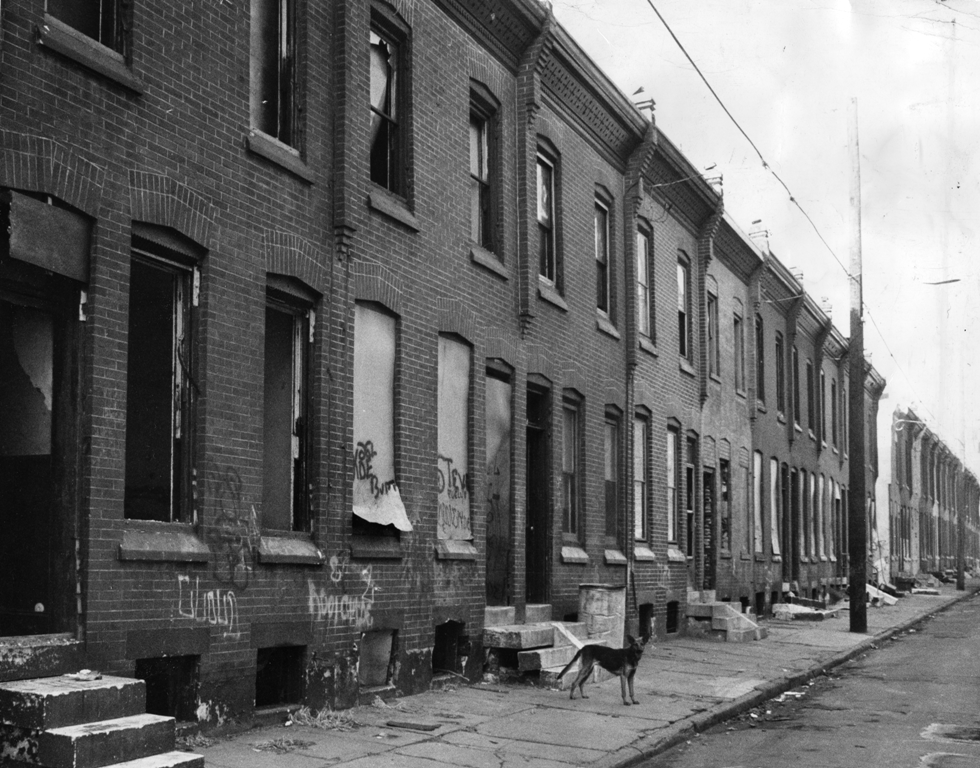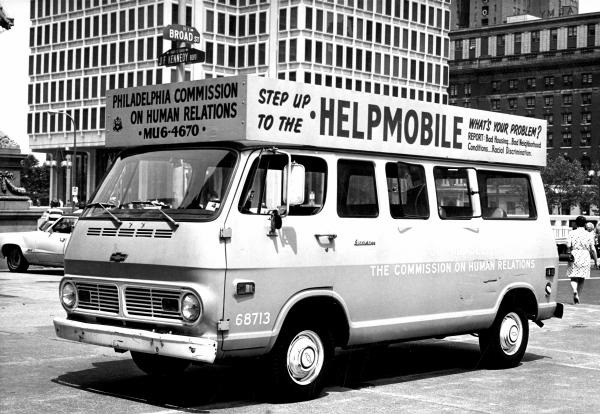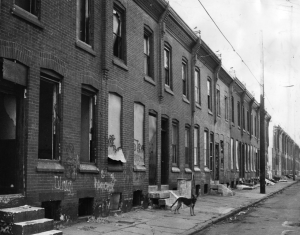Fair Housing
Essay
Years before the United States Congress put housing discrimination law into effect with the federal Fair Housing Act of 1968, Philadelphia and its suburbs grappled with the cumulative effects of policies that severely limited African Americans’ housing options. By the mid-1960s, new laws and policy initiatives addressed the situation in the Greater Philadelphia area with varying results. Over time, city and state initiatives addressed the challenge of fair housing, but without entirely overcoming the collective impact of deindustrialization and continued forms of discrimination.
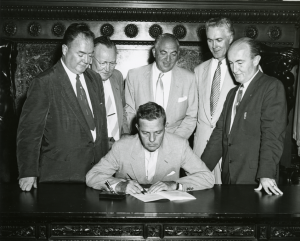
As Philadelphia’s African American population grew in the decade after World War II, from nearly 251,000 to more than 376,000, the city’s Black population faced a severe housing shortage. Only 1,044 of the 140,000 housing units built during the period in Philadelphia were available to African Americans. In the face of such extreme racial discrimination, early fair housing efforts focused primarily on human relations attempts to eliminate or at least lessen the barriers to housing for African Americans.
During the 1950s and 1960s, Philadelphia became a center for fair housing advocacy. Beginning in 1951, under Joseph Clark (1901-90), the city’s first Democrat to serve as mayor in over six decades, the city entered a new era of liberal reform that addressed the city’s racial tensions in several ways. That year, voters approved a Home Rule Charter, which banned discriminatory practices in public employment, public accommodations, and housing. The new charter also replaced the Fair Employment Practices Commission (FEPC) with the Philadelphia Commission on Human Relations, whose mission was to enforce the Home Rule Charter’s pledge to alleviate racial conflicts.
Much of the Human Relations Commission’s early housing efforts focused on providing education about housing integration with publications and through neighborhood stabilization programs. However, racial discrimination, community tension, and vandalism targeting African American homebuyers as well as whites selling their homes to African Americans continued. This prompted the Human Relations Commission to shift its focus from a case-by-case approach to addressing discriminatory housing through far-reaching fair housing legislation.
Fair Housing Efforts Deferred
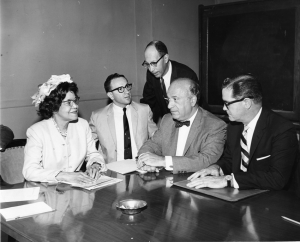
Meanwhile, the civil rights movement had yet to make fair housing part of its agenda during the 1950s. Instead, civil rights organizations deferred such efforts in order to focus on fair employment legislation, particularly Pennsylvania’s Fair Employment Practices Act of 1955. With passage of that act, 42 of the member groups that had previously made up the Pennsylvania Council for a State FEPC took on the fair housing issue when they united to form the Pennsylvania Equal Rights Council (PERC) in 1958. Three years later, PERC’s extensive efforts resulted in the enactment of a statewide fair housing bill. It created the Pennsylvania Human Relations Commission, which acted in similar fashion to Philadelphia’s own Human Relations Commission.
Fair housing enforcement efforts in Philadelphia quickly followed. In 1962, the City Council created a Fair Housing Commission as part of the city’s first fair housing ordinance. It prohibited landlords from engaging in unfair housing practices, such as evicting a tenant or raising a tenant’s rent in properties that violated the City’s Housing Code. A year later, with the support of civil rights groups like the Congress for Racial Equality (CORE) and the Congress for Equal Housing, Mayor James Tate (1910-83) signed the Fair Practice Code, strengthening the Human Relations Commission’s local influence and enforcement mechanisms. Under the new ordinance, the city assumed some of the powers that had previously belonged to the state’s own Human Relations Commission, which had few workers assigned to work its Philadelphia section. Philadelphia’s Human Relations Commission, then headed by Sadie T.M. Alexander (1898-1989), gained the power to order real estate agents and builders involved in prima facie cases of discrimination from doing business until the commission investigated the allegations made against them. Under the new law, it could also fine offenders up to $300 and impose jail sentences of up to 90 days. The Human Relations Commission and the Fair Housing Commission merged in 1993.
Over a decade before federal fair housing legislation became a reality, Philadelphia’s suburbs were home to several smaller but very active organizations devoted to passing regional fair housing legislation. Among them were Friends Suburban Housing Inc. and the Fair Housing Council of Suburban Philadelphia, both established in 1956.
Founded as a nondiscriminatory real estate brokerage firm by a group of mostly Quakers, Friends Suburban Housing devoted its efforts to racially integrating housing in Delaware, Montgomery, and Bucks Counties. Until it dissolved in 1976, the group undertook hundreds of housing discrimination cases. In 1968, it made a major breakthrough when it won a legal battle in the Pennsylvania Supreme Court against the Main Line Board of Realtors for illegal restraint of trade for denying Friends Suburban Housing the use of its valuable multiple listing service. Led by Pennsylvania fair housing icon Margaret Collins (1908-2006), Suburban Fair Housing was successful in many of its efforts to increase integration in mostly white suburban neighborhoods in Greater Philadelphia as well as spurring the creation of dozens of other suburban fair housing groups in the area.
Assisting African American Buyers
Similarly, the Fair Housing Council of Suburban Philadelphia, which was made up of various members of Friends Suburban Housing, fought housing discrimination by providing non-financial assistance to African Americans seeking to buy homes. Considered to be the nation’s oldest fair housing council, it also provided encouragement to apprehensive real estate agents seeking to sell homes to African Americans. As an open-housing watchdog, it monitored real estate firms’ performances and brought discrimination charges against those who executed unfair practices.
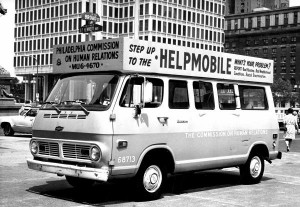
New Jersey faced similar housing discrimination issues. During the 1960s and 1970s, as Camden lost industry and its historically white ethnic residents at the same time, the suburban areas surrounding the city retained a predominantly white population through zoning ordinances that helped exclude lower-income residents. In a landmark 1975 decision, the New Jersey Supreme Court held in the case of Southern Burlington County N.A.A.C.P. v. Township of Mount Laurel that zoning ordinances excluding low- and moderate-income persons like those living in Camden from obtaining alternative housing were unconstitutional. The court’s decision and its repeated affirmation of the “Mount Laurel Doctrine” generated a good deal of affordable housing in New Jersey’s suburbs over subsequent decades, but it did not materially affect the concentration of poor minorities in cheaper housing in Camden and in the area’s older suburbs.
As the rapid decline of industry hit Philadelphia’s established working-class neighborhoods during the 1970s, mounting racial tensions and white flight, accelerated by the loss of jobs, added to the complex problem of enforcing the city’s housing policy. Although white flight opened housing opportunities for minorities in declining neighborhoods, such housing was not always “affordable” for individuals with low incomes. They were relegated instead to limited and aging housing, with the U.S. Department of Housing Development and Urban Development (HUD) finding that, from 1975 to 1978, Philadelphia had frequently discriminated against minorities, many of them poor, in community development programs.
In 1984, the mayoral victory of Wilson Goode, an African American, signified a progressive shift in Philadelphia politics and housing enforcement. With increased focus on community development, city authorities initiated new housing methods that addressed the effects of deindustrialization. City authorities reallocated federal funds to distressed areas and promoted the development of neighborhood-based organizations that managed city housing funds. Still, the financially limited city administrations of the 1980s and 1990s lacked oversight in urban planning and enforcement, often choosing instead to invest in conspicuous Center City-based projects intended to recuperate the city’s tax base. As a result, distressed areas throughout the city, including North and West Philadelphia, continued to decline.
Overall Strategy Lacking
Troubled by a mounting financial crisis, city authorities reorganized Philadelphia’s housing enforcement mechanisms. In 1992, under Mayor Edward Rendell (b. 1944), a city report found that Philadelphia lacked an overall strategy for providing and improving housing. Thereafter, much of the city’s housing powers became centered in the Office of Housing and Community Development. On the federal level, in 1992 the HOPE VI program promoted “New Urbanism” models for public housing. Such models encouraged smarter growth which, in Philadelphia as in other cities, replaced distressed housing with low-density mixed-income developments. As the twenty-first century approached, however, Philadelphia’s financial woes continued to complicate the city’s efforts to address fair housing issues, and city initiatives that sought to “revitalize” distressed neighborhoods found only limited success.
As Philadelphia’s housing market surged in the twenty-first century in the wake of increased private and residential developments, the city grasped opportunities to create mixed-income, affordable housing with the goal of creating racially and financially diverse communities. Originally adopted in 2007, Philadelphia enacted inclusionary zoning requirements in various large-scale developments. With yet one more step towards assuring access to decent and affordable housing, Philadelphia thus continued to grapple with the complex legacy of housing discrimination.
Pedro A. Regalado is a Ph.D. candidate in American Studies at Yale University. He is interested in twentieth-century urban history, particularly questions surrounding race, housing, and migration. (Author information current at time of publication.)
Copyright 2014, Rutgers University
Gallery
Backgrounders
Connecting Headlines with History
- Affordable housing advocates score victories in New Jersey (WHYY, December 5, 2013)
- N.J. high court gives state five months to revise fair housing rules (WHYY, September 26, 2013)
- How affordable is housing in Pennsylvania? (WHYY, February 11, 2015)
- Affordable housing group in Bucks County struggling to keep open (WHYY, March 6, 2015)
- NJ Supreme Court decision on affordable housing explained (WHYY, March 11, 2015)
- Obama administration announces new housing segregation rules (WHYY, July 8, 2015)
- PHA says Queen Lane Apartments on track for Dec. opening (WHYY, October 12, 2015)
- Long-awaiting homecoming signals new era for Philadelphia Housing Authority (WHYY, December 17, 2015)
- City to withhold One Water Street’s certificate of occupancy over affordable housing units (WHYY, June 6, 2016)
- Is housing fair in Philly? Housing agencies need to know. (WHYY, August 24, 2016)
- Hispanic and Asian communities frustrated by city's fair housing assessment process (WHYY, October 21, 2016)
- What will Philly do about barriers to fair housing? (WHYY, November 10, 2016)
- Affordable housing 'gap period' requirement goes before N.J. Supreme Court (WHYY, November 30, 2016)
- New Jersey could add tens of thousands of affordable housing units over the next decade (WHYY, December 19, 2016)
- Will Philly's new fair housing plan advance without pressure from HUD? (WHYY, January 9, 2017)
- Council hearing examines evictions, substandard housing, and possible solutions (WHYY, March 21, 2017)
Links
- Fair Housing Commission (City of Philadelphia)
- Philadelphia Commission on Human Relations (City of Philadelphia)
- Civil Rights in a Northern City: Philadelphia (Temple University)
- Congress of Racial Equality
- Sadie Tanner Mossell Alexander (1898-1989) Historical Marker (ExplorePAHistory.com)
- Commission on Human Relations, Civil Rights in a Northern City: Philadelphia (Temple University)
- The Philadelphia Code
National History Day Resources
- “A Report on the Housing of Negro Philadelphians,” 1953 (Special Collections Research Center, Temple University Libraries)
- “Housing and People,” Report Prepared by the Philadelphia Housing Association, 1955 (Special Collections Research Center, Temple University Libraries)
- Housing and Urban Development Act, August 10, 1965 (National Archives)
- Department of Housing and Urban Development Act, September 9, 1965 (National Archives)
- Fair Housing Act of 1968 (United States Department of Justice)
